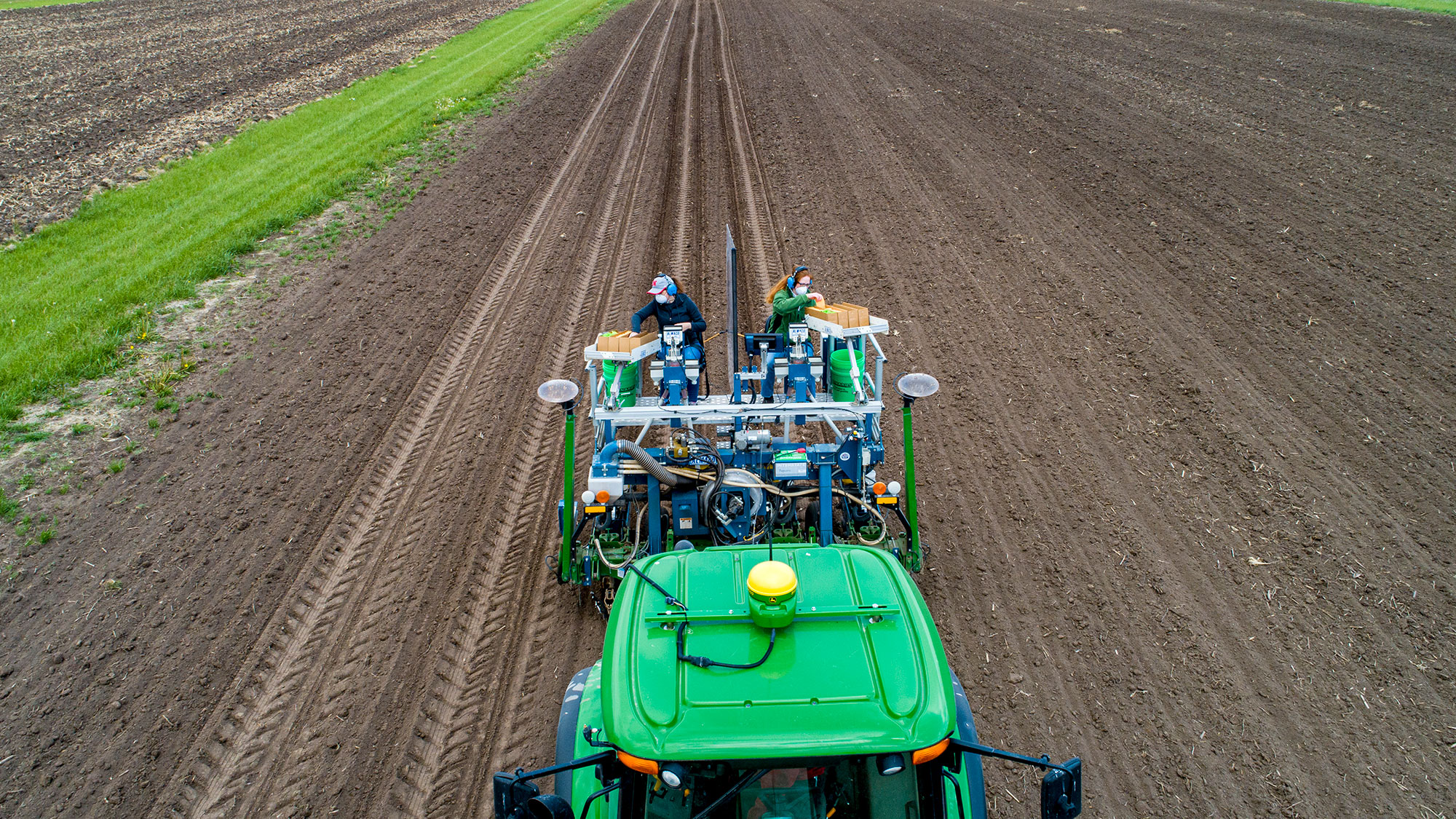
Summertime at Nebraska is officially in full swing — but for Husker faculty and staff members, the hard work of carrying out the university’s mission never stops.
James Schnable, Charles O. Gardner Professor of Agronomy, along with graduate students and postdoctoral researchers in his lab, returned to campus last month to plant hundreds of corn and sorghum varieties in fields on East Campus and the university's Havelock Farm. Lab members began planting corn on May 6 and will finish their last sorghum field on June 8.
Schnable’s team is used to working through hot, sunny days. This year, they faced the added challenge of a pandemic. COVID-19 interrupted a key period of pre-summer planning and limited the number of staff able to work on the planting project.
“It takes a long time for us to prepare for our field season,” Schnable said. “We use little yellow coin envelopes, and thousands of those each need to be filled with the seed of a different variety to get them organized before we can take them to the field to plant. It takes a long time and a lot of really labor-intensive work.
“Once news of COVID-19 started spreading, folks in the lab, particularly undergraduates I’m very lucky to have, started working really, really long shifts because we didn't know how long we would have access to the building. Because of that hard work, we had everything prepared by the time campus shut down in April.”
Luckily, Nebraska’s gradual reopening on May 4 coincided well with the beginning of the planting season. Undergraduate student workers are also allowed back in the fields this June. The team will wait until later in the summer, when their plant varieties have sprouted, to pull data and begin their research.
“The really hard season starts in mid-July through mid-August. That’s when everything is flowering,” Schnable said. “Basically, everyone in my lab will be out in the field for three to four weeks and through the weekends, as well.”
The main focus of Schnable’s research is improving the genetic makeup of crops to increase their water and nitrogen-use efficiency, resistance to heat and more. The lab also works with engineers to test field technologies such as small robots and “Fitbits for plants” to simplify the research process.
“Right now, in order to get the data we need, we’re still sending graduate students to walk through the field with rulers and notebooks in the middle of the summer in 95-, 100-degree (heat),” Schnable said. “We've got wonderful, dedicated people, so we want to be able to help them work more efficiently and spend more of their time analyzing data and less time collecting it.”
Outside of field research, Schnable said the transition to working from home has been relatively seamless. For example, undergraduate student workers who moved away from campus were able to continue earning a paycheck by remotely recording the properties of plants photographed last year to train machine-learning software. Graduate students and postdoctoral researchers used the time to help write code, put together research papers and analyze data from previous years.
“It is actually remarkable to me how much of our research we don't have to be on campus to do. We need to go to the field, we need to grow crops and we need to collect data from the crops, but beyond that, an amazing amount of genetics and phenotyping research now happens on computers,” Schnable said. “Most of the folks in my lab haven’t been able to come to campus — other than for field work — in months, and they have been as productive, if not more productive, working from home.”
Learn more about Schnable's research at Nebraska.
Lindsey Amen | University Communication
More details at: https://go.unl.edu/duyg